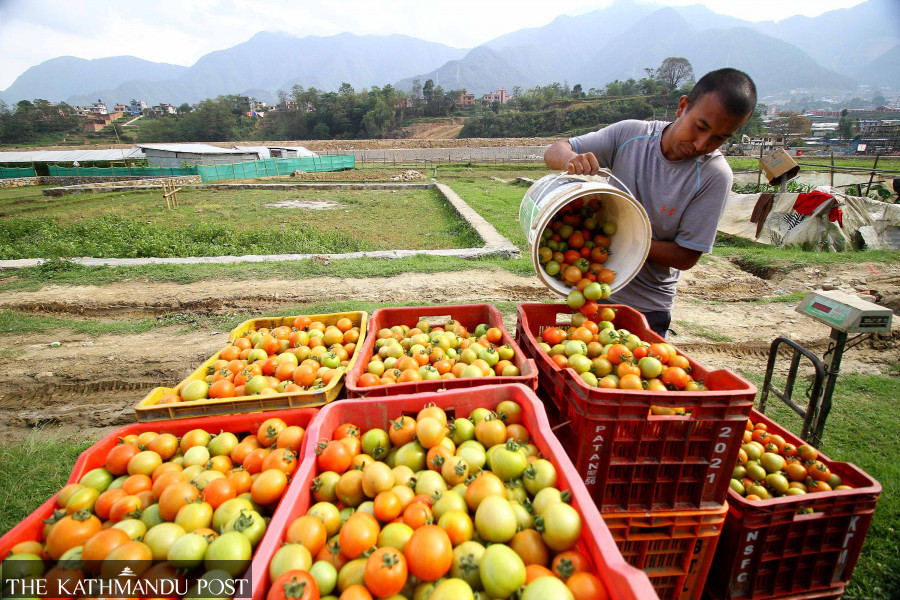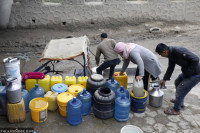Money
Nepal’s growth faces slowdown amidst domestic and external challenges
The World Bank said that political stability remains important to manage the economy and ensure the continued pursuit of development priorities.
Post Report
Nepal’s economy will experience slower growth than previously projected due to the impacts of import restrictions, monetary policy tightening, higher inflation, and shrinking government expenditure reflecting lower government revenue, according to the World Bank’s twice-a-year country update.
The World Bank said that political stability remains important to manage the economy and ensure the continued pursuit of development priorities.
The Nepal Development Update released on Tuesday said Nepal’s economy would grow by 4.1 percent in the fiscal year 2022-23, ending mid-July, a downward revision from the October 2022 forecast.
The report said that higher-than-expected inflation would reduce household purchasing power and drag growth.
Welfare recovery remains uncertain due to rising inflation and risks to agricultural production.
Reduced investments in human capital, especially amongst those yet to recover from a job loss following Covid-19, also impose risks to rising inequality.
Import restrictions were a contributing factor to slower growth and lower revenues in the first half of the year.
Nepal relies heavily on imports as a tax base, which contributes about half of total tax revenues through VAT, excise and import duties and allows Nepal to raise higher revenues than most other countries in the region.
The import restrictions imposed in 2021-22 and eventually lifted in 2022-23 reduced the current account deficit and stabilised foreign exchange reserve stocks as intended in the first half of the current fiscal year.
The unintended consequences of this policy include a steep drop in fiscal revenues and slower growth in the first half of 2022-23 as goods imports fell.
The World Bank said that for the first time in five years, Nepal’s fiscal balance was negative in the first half of 2022-23. Revenues fell across the board while expenditures remained flat, opening an estimated fiscal deficit of 0.3 percent of the GDP.
It was expected that import restrictions and slower credit growth would directly impact trade-related revenue in customs and excise revenues, which together fell by an estimated 1.6 percentage points of GDP between the first half of 2021-22 and 2022-23.
As around 60 percent of VAT and 40 percent of excise collections are based on trade, VAT revenues and income tax receipts combined fell 1.1 percentage points of GDP between these two periods as well.
Data from the first six months of the current fiscal year paint a mixed picture, the report said.
The high demand for imports witnessed as Nepal emerged from the pandemic has moderated, foreign exchange reserve buffers are accumulating, credit is growing more sustainably, tourists are returning to the country, and remittances are growing as outmigration surges.
The less positive aspects of the economy’s evolution include lower growth prospects than previously anticipated, a fiscal deficit in the first half of the year, and the continuation of a challenging external environment as global interest rates continue to rise and commodity prices remain moderately high as Russia’s invasion of Ukraine continues.
Growth is expected to accelerate to 4.9 percent in the next fiscal year, supported by the resumption of tourism, growth in remittances, and the gradual easing of monetary policy.
However, risks to the outlook are tilted downside and include higher-than-expected inflation, which will dampen consumption and growth, the possible impacts of likely rotations in government officials, and rising inequality from reduced investments in human capital, especially amongst those yet to recover from unemployment following the pandemic.
“Amid measures taken to address pressures on the external sector, the Nepali economy has faced the unintended consequences of a slowdown in economic growth and lower fiscal revenue,” said Faris Hadad-Zervos, World Bank Country Director for Maldives, Nepal, and Sri Lanka.
“This makes the government‘s Green, Resilient, and Inclusive Development (GRID) agenda even more pressing.”
“These reforms will yield optimal results as Nepal communicates its intended policy changes with the public in advance, takes timely action, and fine-tunes policies during implementation,” he said.
The agricultural sector also grew with an expansion in main-season paddy production.
However, industrial sector growth declined as construction activities slowed.
The construction sub-sector contracted for various reasons. First, prices of construction materials rose significantly. Second, credit extended to the construction sector declined (including residential housing) due to a lack of loanable funds and higher interest rates.
Third, the temporary closure of illegal crusher industries in January 2023 led to a shortage of construction materials such as sand and gravel.
The construction activities in Nepal take place mostly between October and November (after festivals) and May (before monsoon), with a significant share of government capital spending occurring mostly in the second half of the fiscal year.
The agricultural sector expanded by 1.5 percent year-on-year in the first quarter of the current fiscal year.
It is expected that further growth will register in the second quarter reflecting an increase in main season paddy production (8.6 percent year-on-year) even with shortages in chemical fertilisers, reflecting a good monsoon and improved seed varieties.
Despite the increase in production and productivity of paddy, Nepal continues to import rice, mainly from India. Agricultural imports including rice contributed to almost one-fifth of overall imports in the first half of the current fiscal year.
Private investment cooled, the report said.
The decrease in construction activities, lower registration of new businesses, slower credit growth to the private sector, and lower imports of intermediate and capital goods suggest a decline in private investment during the first half of the current fiscal year.
These declines were partially offset by a rise in public investment.




 7.12°C Kathmandu
7.12°C Kathmandu














